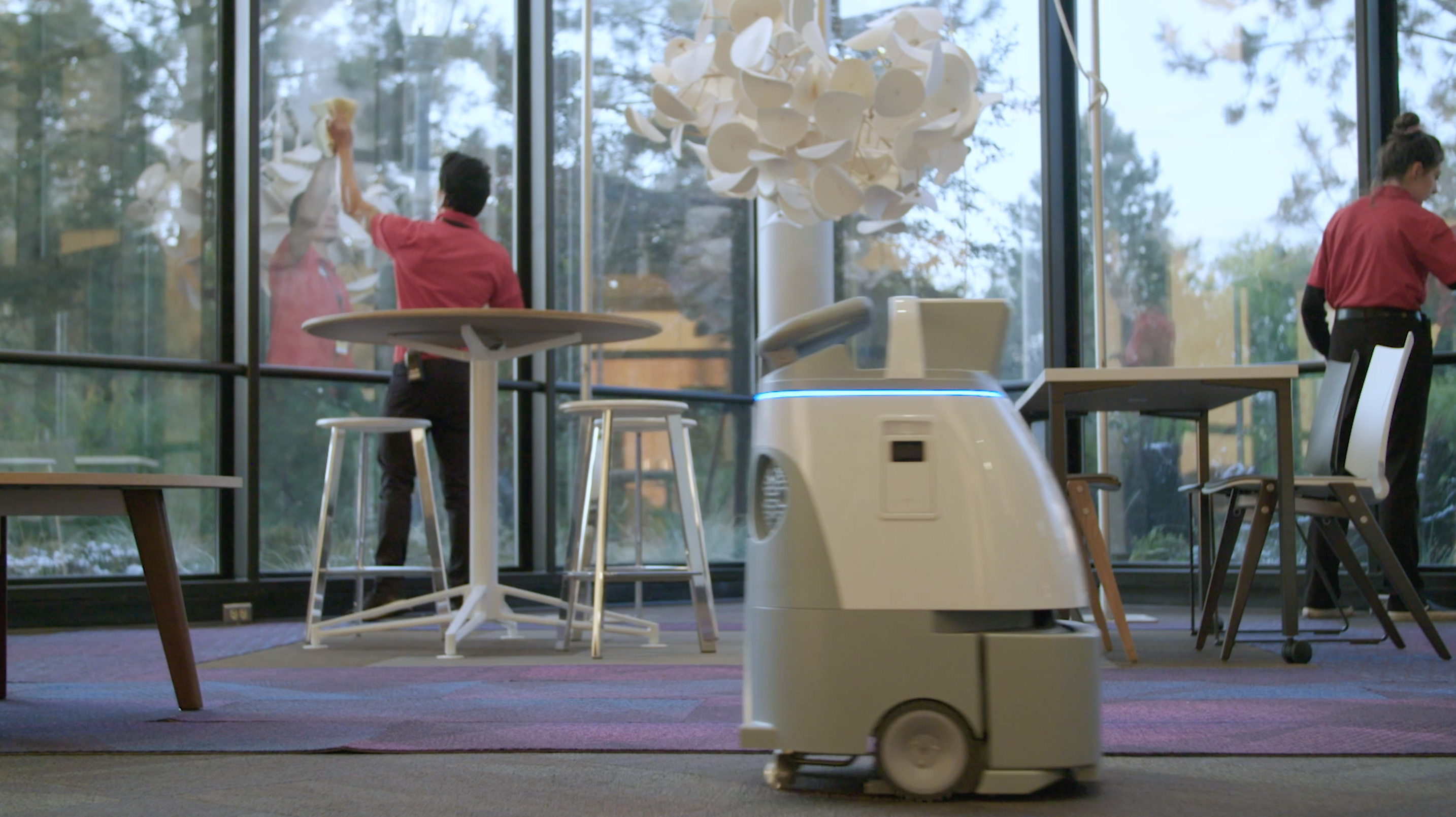Organizations that decide to purchase a robotic floor cleaning solution may be focused on the operational impact of their investment, and for a good reason. After all, these collaborative robots (cobots) are often deployed to relieve cleaning staff of repetitive, monotonous tasks such as vacuuming so your staff can focus on value-added tasks such as polishing or disinfection.
However, those companies that have deployed cleaning robots soon realize that today's robots also pose a unique opportunity to contribute to an exceptional customer experience. By considering your cobot's impact on customers and having a plan for measuring its return on experience, organizations can leverage this human-robot collaboration for a more significant impact on their investment.
How to Calculate ROI on Customer Experience
Customer experience describes all interactions with a business that impact customers' feelings about that business. Any organization in an industry where consumers have a choice in where they purchase similar products or services should be considering the experience it provides those customers. Whether in retail, hospitality, or even healthcare, the experience you deliver matters.
Return on experience is the metric used to measure the impact of your investments in customer experience on your organization’s bottom line. Understanding your return on experience helps you build meaningful interactions and relationships with your customers more strategically.
Calculating this return on experience does require consideration of some factors that can be hard to measure.
The equation to measure return on experience looks like this:
(Value of Experience/Cost of Creating Experience) x 100 = the percentage of achieved return on experience
The key factor here is identifying relevant metrics for measuring the value of the experience you deliver, as we’ll discuss below.
Experience Moments to Measure
The value of your experience may include several different metrics that come from the customer experience and the experience of your employees and even investors. While the specific metrics you track will depend upon aspects unique to your business, below are five ways that robots are impacting the customer return on experience.
1. Robots Create Shareable Moments
Robots offer a unique opportunity to engage with a brand. That’s because cobots are still a relatively novel solution for many organizations. A certain excitement comes with seeing a commercial robot vacuum, for example, move quietly through a hotel lobby or university library. If someone is tweeting about the robots in your hotel hallways, that can drive excitement that may attract new customers eager for a similar experience.
Organizations can build on this excitement by positioning robots as “part of the team.” Robots are meant to be collaborative support solutions, working alongside human staff. Some organizations play up this human-robot collaboration by giving their cobotic solutions names and name tags. Adding a hashtag to a name tag creates an excellent opportunity for guests or employees to share a moment with friends and family or on social media.
When Sheraton deployed Whiz, the commercial robot vacuum from SoftBank Robotics, at its Sheraton Kona Resort in Hawaii, the company used the robot as a visible reminder of its commitment to enhanced cleaning. As a bonus, the robots stood out in guests’ recollections of their stay, said resort general manager Paul Evasick. “Guests really get a charge of a robot going through the lobby or down the hallway where they’re walking,” he says.
2. Robots Can Reduce Turnover Rates
Robots are meant to reallocate the time that your cleaning team spends on the menial, repetitive tasks that tend to lower morale when it comes to cleaning. For an industry with turnover rates averaging near 200%, an investment that can reduce the cost of turnover has a demonstrable return on experience.
Today, cobots present a new opportunity by allowing a chance to build up the housekeeping staff's opportunity for advancement. Data indicates that staff retention is 34% higher among organizations that provide employee development opportunities. Organizations can “upskill” their team by creating a robot management skillset. This training can serve as an investment in your employees’ growth.
3. Robots Demonstrate Value of Employees
During the COVID-19 pandemic, many organizations invested in commercial robot vacuums to better promote social distancing among employees. It also allowed housekeeping staff to focus on disinfection and cleaning high-touch areas while offloading vacuuming. However, these investments also demonstrated that employers took their staff’s health and safety seriously. While many cleaning staff were overburdened and often put at risk as essential workers, those companies that took demonstrable steps to support their staff, including human-robot collaboration, fared better.
Going forward, expect this focus on staff health and well-being to continue to be a major driver of strong employee loyalty. Whiz supports this with data through the Whiz Connect platform that provides demonstrable evidence of a cleaner environment. These cobots also reduce the muscle strain that is a common result of repetitive vacuuming.
4. Robots Can Strengthen Consumer Loyalty
Clean, healthy environments will also play a critical role in consumer loyalty and return on experience. This was part of the drive that led Hilton Garden Inn in Gilroy, Calif., to invest in the commercial robot vacuum Whiz. Hotel staff spent more than 10 hours each week vacuuming. With staffing shortages in the area, the cleaning team was often stretched thin, which carried over to the maintenance staff who often helped pick up the slack in cleaning common areas. Altogether, this proved a drag on staff productivity. By deploying Whiz, the housekeeping staff attended to more detailed cleaning and saw guest cleanliness scores rise from 82% to 90% in only a few months.
“Whiz is a great team player,” says Hilton Garden Inn Gilroy general manager David Mcloughlin. “Everyone loves seeing Whiz in action.”
5. Robots Position You As An Innovation Leader
Today, robots position organizations as being “ahead of the curve” in innovation. Early adopters of technology are often seen as influencers within their sector. They gain thought leadership status due to their experience in leveraging new solutions. This type of leadership positioning is incredibly attractive to investors looking for organizations that stand out. Emphasizing human-robot collaboration can help companies position themselves as an even more attractive investment opportunity.
Consider the Full Impact of your Robots
While commercial robot vacuums and other service robots are often deployed solely as an operational solution, companies can get far more value from this solution by considering its impact on customer experience. This may require that operations teams work closely with your marketing department or customer experience professionals to maximize impact.
Your vendor can also help you create a more impactful robot rollout. To learn more about how to leverage your cobotic solution to meet your unique needs, contact SoftBank Robotics.






